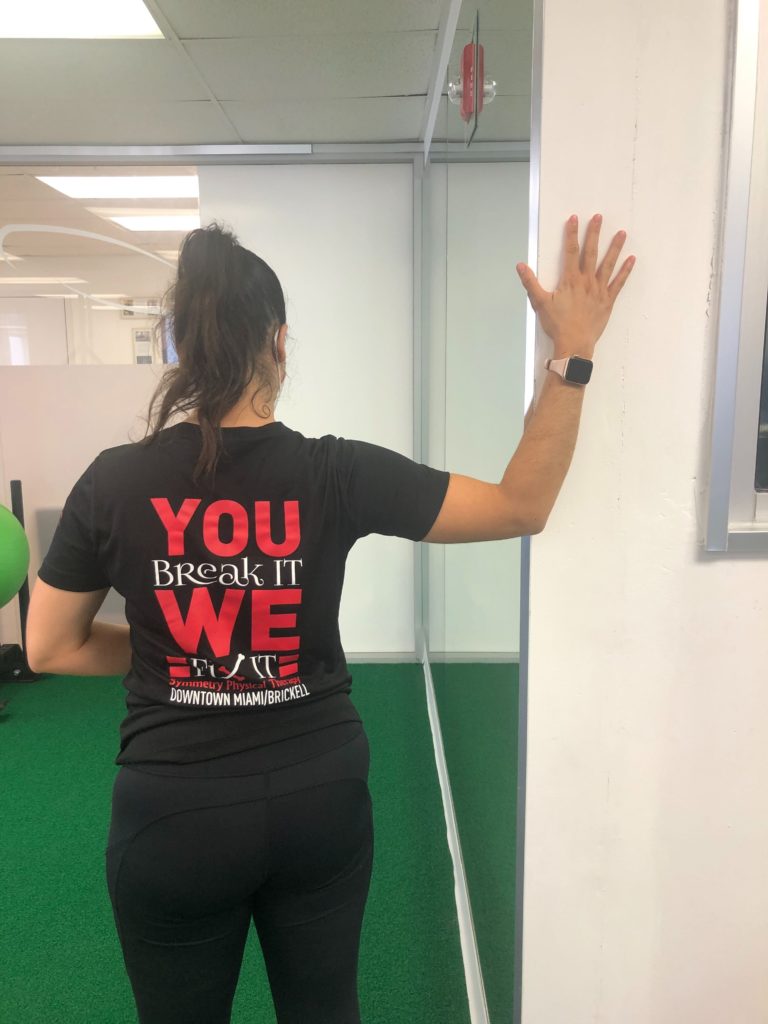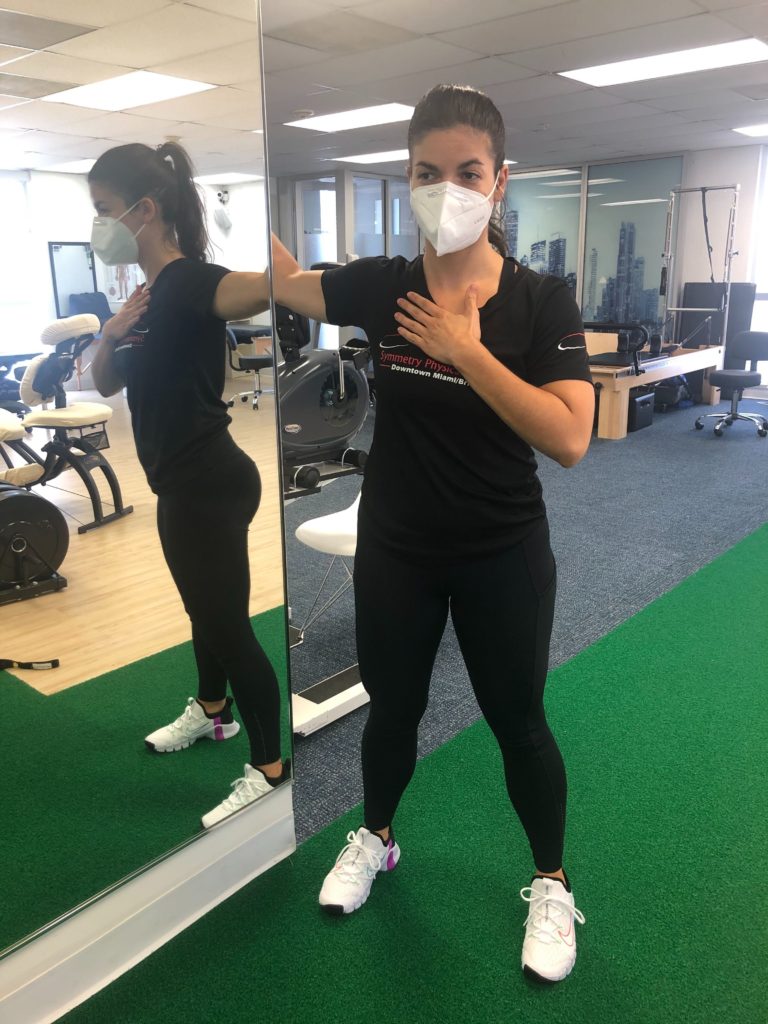Best Stretch Ever
Best Stretch Ever: Applying Neuromuscular Science to Your Everyday Stretch Routine
Written By: Dr. Nicole Ramos, PT, DPT
Stretching is one of those things that we all know we should do regularly, but don’t. Everyone has a different reason for why stretching is consistently left out of their exercise routines. They include everything from “it’s too uncomfortable” and “I don’t have time” to “I don’t like” or “I’m just not flexible.”
Well, what if I told you there was an easy way to improve the effectiveness of your stretch session, and you could see the results almost immediately? It’s not snake oil, and it’s not magic. It’s called Contract-Relax Technique. It comes from a widely used methodology in physical therapy known as Proprioceptive Neuromuscular Facilitation. Stretch therapy is one of the services that we offer.
Commonly abbreviated to PNF, the methodology has been in use since the 1940’s and was originally applied to patients living with significant neurological conditions. The method was developed through a collaboration between physician Dr. Herman Kabat and physical therapists Margaret Knott and Dorothy Voss, all of whom were thought-leaders of their time. Currently, it has a wide range of applications within advanced physical therapy practice, including orthopedic and sports physical therapy practice.
Contract and Relax: Seems simple enough… or is it?
The Contract-Relax Technique is one of several techniques used in the PNF method, and it’s the one this article focuses on to improve the effectiveness of your stretch routine. The technique utilizes principles of autogenic inhibition. Autogenic Inhibition describes the inhibition of a particular muscle due to the activation of sensory receptors located within the muscle and muscle tendon. These receptors are called golgi tendon organs (GTO) and muscle spindles, and they respond to changes in muscle tension and length. These receptors set off a chain reaction that results in the relaxation of the target muscle that is believed to cause the elongation in muscle length seen with Contract-Relax Technique (Hindle, Whitcomb, Briggs, & Hong, 2012).
How to Do Contract-Relax
Once you understand the basic concept behind contract-relax, it’s easy to apply to essentially any stretch you already perform. To give it a try, follow these instructions:
- Place the target muscle/body part in its position of maximum passive stretch.
- Contract the target muscle as if your intention was to create movement. No movement will occur because you will be holding the limb in its place by resisting your own muscle contraction.
- Hold this for 8 seconds. This part is important!
- Now, relax the contraction.
- Attempt to move the target muscle into a greater position of stretch.
- Repeat this sequencing until no further range of motion is gained.
(Beckers, Adler, & Buck, 2014)
Can You Give Me Some Examples?
Absolutely! I’ve compiled a list of some of the best physical therapy stretches you can try using the contract-relax technique. Simply apply the instructions above to each stretch position and you’re good to go!
Quadricep Stretch in Tall Kneeling aka “Couch Stretch”
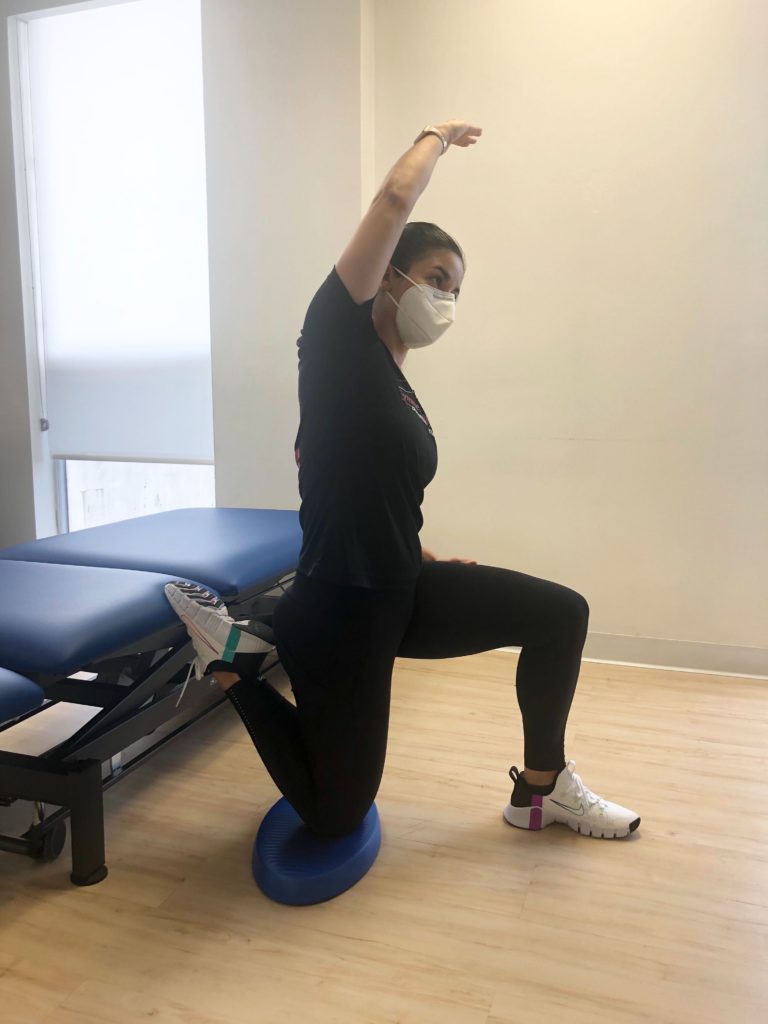
I integrate this stretch often for my patients on knee rehab programs and hip rehab programs. It can also be used in physical therapy for back pain when there is an anterior hip contribution. You can see a demonstration of this stretch on our Instagram.
Instructions: Begin in a tall kneeling position next to a wall or chair that you can hold on to for balance. Tuck your tailbone under, placing your body in a posterior pelvic tilt. Maintain this pelvic position as you bend your knee and use your hand to pull your leg into as much knee flexion as you have available. Next, attempt to straighten your knee as you resist this motion using your upper body strength. Hold for 8 seconds, then relax. Attempt to pull the knee into the new available range. Repeat until no further range of motion gains are made.
Hamstring Stretch in Supine
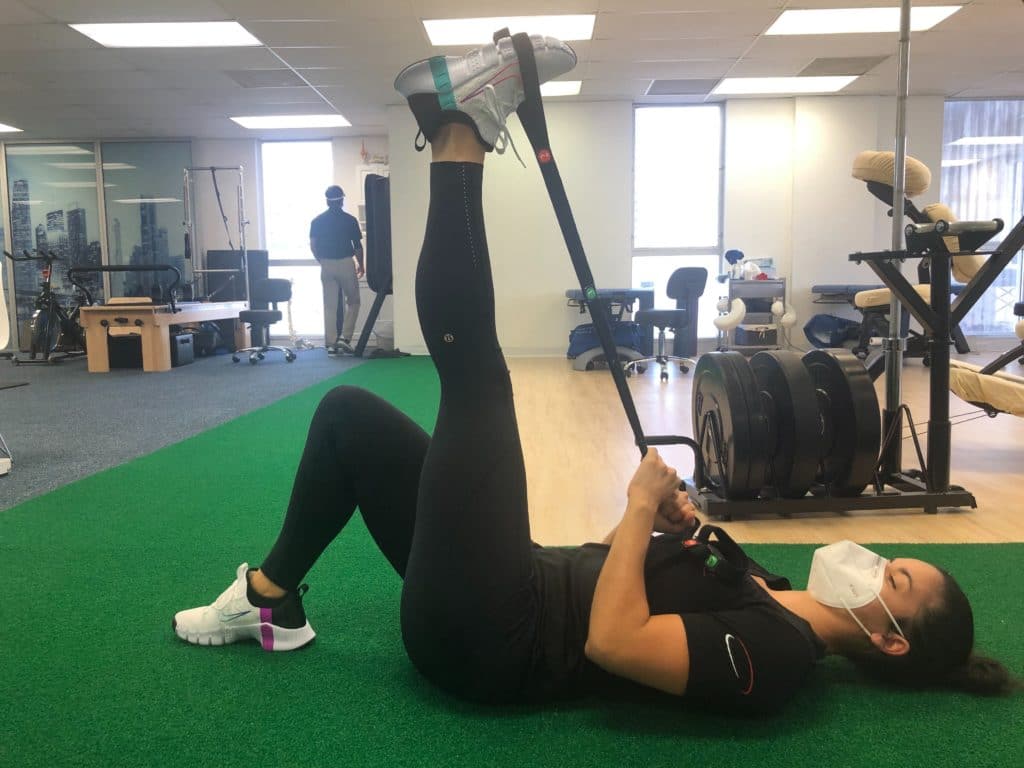
If you have a difficult time raising your leg to 90 degrees, you need this stretch! Check out our Instagram for a video demonstration.
Instructions: Begin in a lying down position with your legs long. Using a yoga strap or towel to support your leg, raise your leg off the ground as high as your flexibility allows. Next, attempt to press your leg back down to the ground as you resist this motion using the yoga strap. Be careful not to simply lock out the knee and contract the quadricep. The muscle contraction needs to come from the hamstring complex. Hold the contraction for 8 seconds, then relax. Attempt to pull the leg into the new available range. Repeat until no further range of motion gains are made.
Pectoralis Stretch
Instructions: Begin standing in front of a wall. Raise your arm to the side at about an 85 degree angle and place your palm against the wall. Rotate your ribcage away from the wall until you feel a stretch in your chest muscles. Next, press your hand into the wall as if you would perform a pec fly motion through the wall. Hold for 8 seconds, then relax. Attempt to rotate the ribcage further into your new available range. Repeat until the no further range of motion gains are made.
Upper Trapezius Stretch
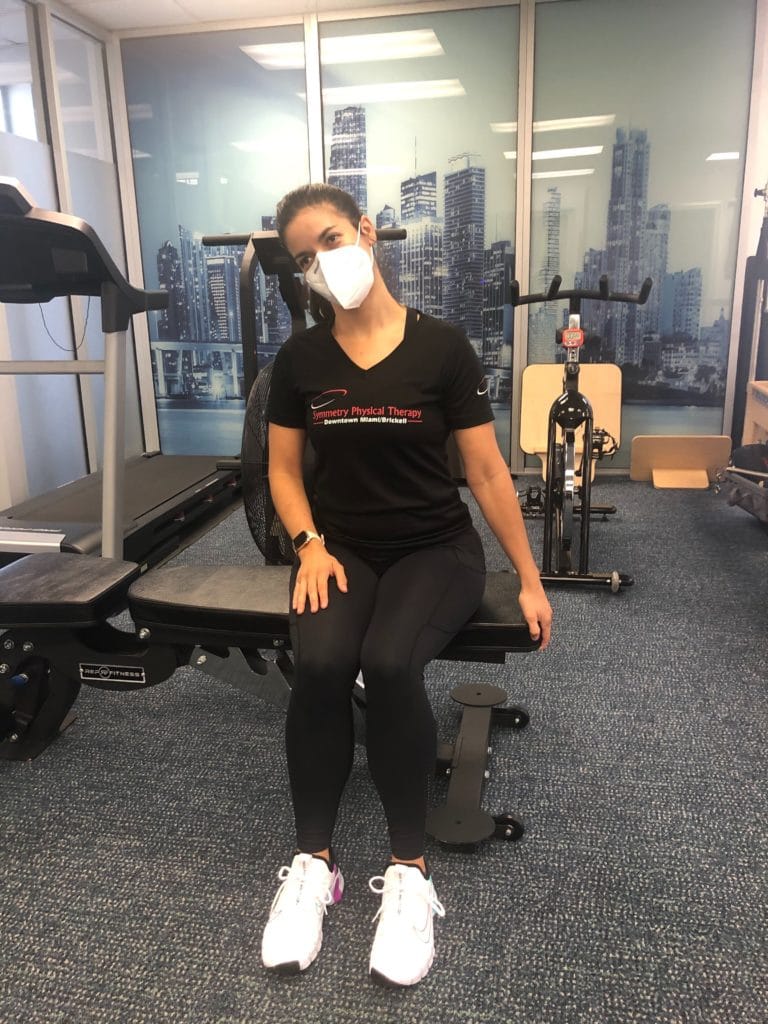
If your upper traps constantly feel tight, you need this stretch!
Instructions: Begin sitting at the edge of a chair with your feet touching the floor. Side bend your head away from the shoulder you intend to stretch. You should feel a mild stretch up the side of the neck. Then, grip the bottom of your chair with your arm outstretched at about a 20 degree angle– which means you may need to scoot your hips away from the edge of your chair a bit. You will hold this position for the duration of the stretch.
Next, gently attempt to shrug your shoulder while still holding on to the bottom of the chair. Make sure that no actual movement occurs. This is the isometric part of the contraction. Hold for 8 seconds, then relax. Attempt to lean your body away from the side you are stretching, noting if you have new available range. Repeat until no further range of motion gains are made.
Do you plan on trying these moves before your next workout? Tell us how it went! DM us on Instagram @symmetryptmiami. Tag us in a video of you crushing some of these moves, and we’ll feature you in our stories.
For more tips on exercise selection and all things physical therapy, check out our other blog posts.
Intense stretching and muscle contractility
Mobility work is extremely important and beneficial for exercisers of all levels. Advanced athletes and heavy lifters should note that intense mobility work with prolonged holds and stretching is better left for the end of a workout. Intense stretching decreases muscle tissue contractility temporarily, which can be counterproductive before a heavy lifting session or intense HIIT program.
Written By: Dr. Nicole Ramos, PT, DPT
Citations
Hindle, K., Whitcomb, T., Briggs, W., & Hong, J. (2012). Proprioceptive Neuromuscular Facilitation (PNF): Its Mechanisms and Effects on Range of Motion and Muscular Function. Journal of Human Kinetics, 31(1), 105-113. doi:10.2478/v10078-012-0011-y
Beckers, D., Adler, S., & Buck, M. (2014). PNF in practice. Heidelberg: Springer.

